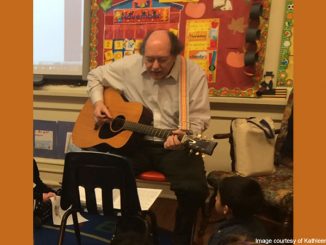
Like many others, my parish has turned to virtual faith formation classes. Last spring, we had a few virtual sessions to close out the year, so I got a sample of what was in store.
The difference this year was that I had never met any of my students in person, and I wondered how I could engage them. I mailed each child a postcard to say welcome to the class. I e-mailed each family two Getting to Know You sheets. One sheet included some fun facts about me and my co-catechist. The other was for the child to tell us about him- or herself: what name to be called, pets, sports, musical talents, favorite things, etc.
A few days before our first class, my co-catechist and I held optional online meet-ups so that we could meet our students one-on-one. This was a substitute for the short meet-and-greet time we would normally have as children entered class on the first day. The Getting to Know You sheets provided an easy way to start conversations. It also helped us see their personalities and break the ice.
Our online classes are just 30 minutes long, so I have to use the time wisely. While I would normally ask open-ended questions during in-person classes, I realized that was going to use up precious time. I knew that asking young children to sit still and just listen to me talk was going to make them fidgety. Engaging them physically would signal that something was happening, so I looked for ways the children could move their upper bodies. (I realized I couldn’t ask them to stand, because then we couldn’t see each other.)
For our first session, I used answers I’d gleaned from our online meet-ups and the Getting to Know You sheets to play the Finger Game. I asked the children to make a fist and raise a finger every time they matched what I said. For instance, hold up a finger if you have blue eyes, like to play soccer, play an instrument, etc. I made sure to say things that enabled everyone to have multiple fingers raised. Then we tied this activity to how these gifts make us a special creation of God.
I now use more yes-or-no questions than I normally would in the classroom. Rather than just having the children raise their hands, we use a fork and a teaspoon. The children hold up a teaspoon if they agree or if the answer is yes (since teaspoon and true both start with the letter T) and a fork if they disagree or if the answer is no (since fork and false both start with the letter F). I wanted to use something that everyone would have readily available at home but not something that would be too distracting (like stuffed animals).
One of the things that worked well was a sacramental show-and-tell. I asked the children to bring one thing from their house that reminded them of Jesus. I expected to see a cross or a rosary (and I did), but my students got creative. One girl brought her stuffed lamb, because she said it reminded her of our Good Shepherd lesson. One boy brought a loaf of bread, because it reminded him of the loaves and fishes story. My church is a Jesuit church, so seeing the Ignatian concept of finding God in all things was inspirational.
How do you engage children in online lessons? What has worked well for you? What challenges have you had to overcome?
With Finding God: Our Response to God’s Gifts, children are offered a new model of catechesis that embraces technology, responds to the ongoing invitation to enter into a deeper relationship with God, and encourages them to find God in all things.





Be the first to comment